Recent Advances in South Indian Archaeology – The 2nd International Symposium in memory of Iravatham Mahadevan – Dravidian – known and unknown (2)

10-03-2023 – Friday – Continuance of paper reading session: After the Minister’s visit, Appasamy Murugaiyan delved upon the nuances of syntax, grammar, linguistics, prosody, etc. With Sangam literature, he was explaining such linguistic traces, glosses and interpretations. Next, Pitchappan while presenting his views on the “Evolution of Dravidian – known and unknown” mainly repeating already published matter “out of Africa” hypothesis and theory and maintaining his stand that Dravidians came from Africa. He also claimed that “Dravidian is inclusive of language, culture and gene code” Men originated from Africa and by 60,000 YBP spread out from Africa, unidirectionally, the Y-chromosome was spreading. Polymorphism – first man appeared in Veerumandi, near Madura, in Tamilnadu. In other words, the African primate, hominid came here to settle and evolve into a Dravidian. All the Sangam tribes Kadan, Kurumban etc., of all categories came from Africa. He undertook the 1-million-dollar project in 20006-2015 on the “Genography” project 10,000 Indian samples taken and research conducted to arrive at such results. Three unidirectional migrations represent Dravidian at different periods. Neolithic people came from outside. How the migrated were mixed, languages cannot be determined. Root words spread occurred by 15,000 YBP. Murugan is considered as “Tamil god” Neolithic god, but, it was known in Gandhara before Sangam period. Caste system in Sangam period is noted with male domination. With chromosomes and their connection with the language speaking people are pointed out. Yet, nothing can be said definitely. Even asper the dating c.6th cent.BCE does not help this chronology.
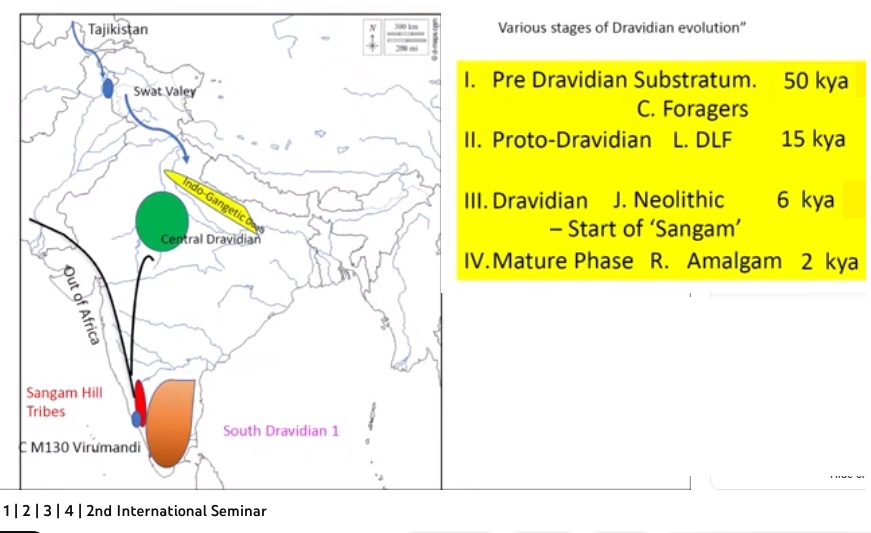
He was arguing that “Dravidian” evolved at different periods………………………..
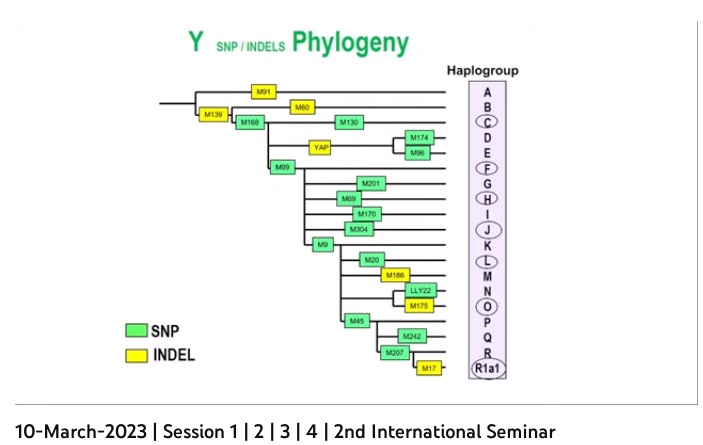
For the questions asked, he maintained that humanity originated only from Africa: He claimed that he worked with the “Genographic project” and the DNA results show that humanity originated in Africa and spread to other continents. Was there any origin of man from South India and such questions were asked, but, he maintained that that humanity originated in Africa and spread to other continents. This is studied after 2500-3500 YBP, thus, much of miscegenation could have taken place. It is believed that man originated from Africa and spread to other parts of the world. He sticks to the theory, as obviously, he has been working for the project. Europeans do not accept that they originated from Europe and therefore, if they originated from India, then, evidences have to be produced.
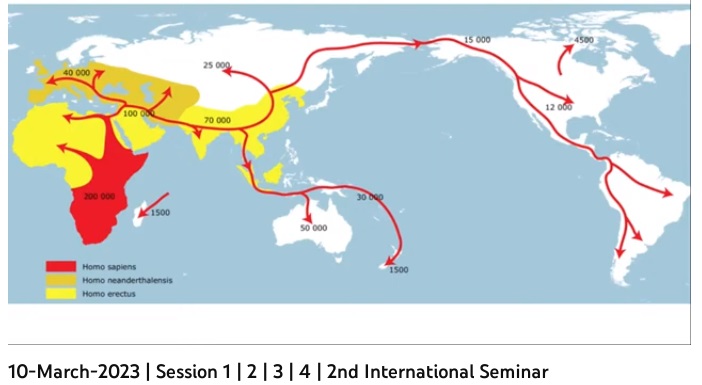
He was stressing how humanity originated from Africa and spread……..
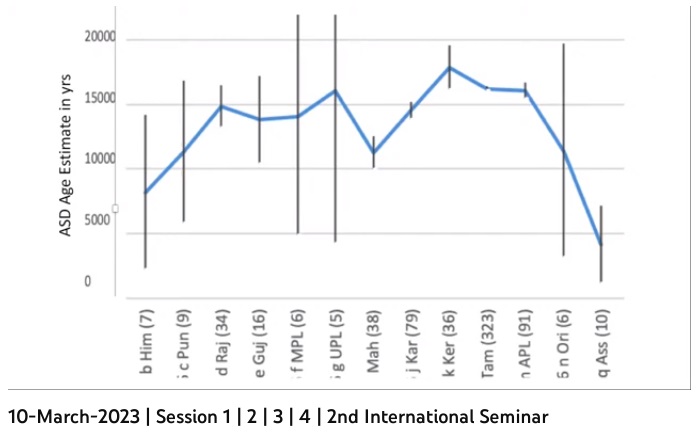
Tamil monkey or Dravidian monkey?: TH CM was reacting euphemistically, “Our minds become energized and happy when we say Tamil Nadu Tirunal. Nevertheless, some people tease us by saying the first monkey born in the world was the Tamil monkey. However, we are not concerned about that. Whatever we say, it is scientifically based,” he said[1]. TH CM was telling that “the first monkey on the earth was a “Tamil” monkey and such claim is scientifically based”[2], but, he (Pitchappan) says, it was a Dravidian monkey. Thus, the Tamil-Dravidian wrangle has been there linguistically and scientifically among the DNA-scientists and the Dravidian experts. As the Europeans try to have their own “Neanderthal,” Dravidians want their “Tamil counterpart.” Therefore, the hypothesized monogenetic or multi-genetic origin of hominid, homoerectus, monkey, ape, chimpanzee etc., would continue with scientific research.

Aryan invasion and Dravidan invasion or migration?: Indian history has been with the Aryan race, invasion and then, migration (through invasion and various means) hypotheses and theories. Thus, whenever the word “Arya, Aryan, Ariyan”, etc., was read, Indians think about some nomadic race coming from Central Asia entering India through the northwest and defeating the Dravidian people of the area, particularly, the Indus Valley. Though, initially, “Dravida, Dravidians, Dravidar” were not thought of, after the advent of Caldwell, such hypotheses and theories have also become popular. Thus, the Aryan-Dravidian hypotheses and theories have been part and parcel of the history books taught for the last 100 hears. As for as the Tamilnadu is concerned, such hypotheses and theories have become not only history, but also, art, archaeology, dance, drama, cinema etc., at one side and politics, political party, political ideology and so on., at the other side. Now, if the DNA research claims that Dravidian also came from Africa, then, what exactly happened in history?

Rakhigarhi or Africa? – how the archaeologists decide?: According to recent reports, with the latest works (archaeological and genetic) in and around Rakhigarhi, Sinauli, etc, the Aryan invasion hypothesis surely died its deserved death. But another theory became prevalent that said that Homo sapiens first emerged in Africa and by around some 70-50,000 years ago, a small group (possibly as few as 150 to 1,000 people), crossed the Red Sea. They travelled along the coastal route around the coast of Arabia and Persia until reaching India. This proposition was popularly called the Post Toba Theory. As per the existing models, the modern human dispersals are primarily based on lithic assemblages, a few fossils remains and genetics. According to the most popular model (MIS 5), the modern humans left Africa around 120,000 years ago and colonised the rest of the whole world by 40,000 years ago. But the recent studies tell us that as per the fossil evidence from Apidima Cave in Greece (Harvati et al., 2019[3]) and Misiliya cave in Israel[4] (Hershkovitz et al., 2018) the modern human existence outside Africa goes older than 210,000 years ago.
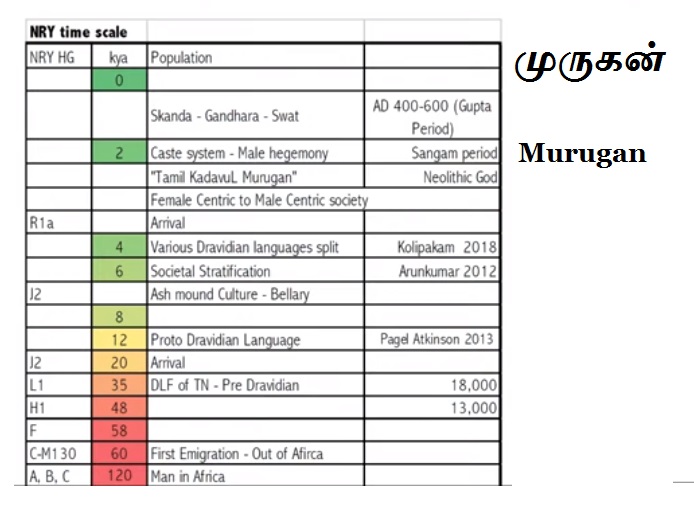
Pre-Toba models and other claims about the origin: However, these findings do not yet ascertain the dispersal to South Asia earlier than 120,000 years ago. The scholars of the field attribute the Middle Palaeolithic technologies’ presence in India and the rest of South Asia to the modern humans that arrived from Africa between 120,000 and 70,000 years ago (Petraglia et al., 2007). This conclusion came from a very interesting finding from the 74,000-year-old Toba Tuff deposits at the Jwalapuram site. These were the Middle Palaeolithic artefacts and resembled almost the African Middle Stone Age artefacts (Petraglia et al., 2007; Haslam et al., 2012). And that is how the Pre-Toba model (Petraglia et al., 2007) became popular to explain the initial modern human colonisation of India.
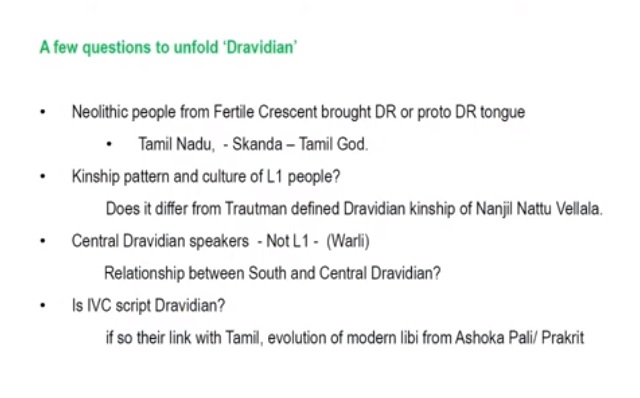
Toba, pre-Toba etc.,: Next the luminescence age testing was further carried out in various sites, and they further reinforced the pre-Toba model. The Middle Palaeolithic assemblages from Katoti in Rajasthan and Sandhav in Kutch, were found to be around 96 ± 13 and 114 ±12 thousand years old respectively (Blinkhorn et al., 2013; Blinkhorn et al., 2019). Even the research from a site in the middle of the Son Valley called Dhaba showed out middle Palaeolithic assemblages dating to around 80,000 years, thereby bringing more buttresses for pre-Toba model (Clarkson et al., 2020). These studies utilising reliable chronometric ages of Middle Palaeolithic assemblages ranging from 120 to 40 thousand years ago, hint to the notion that the South Asian Middle Palaeolithic expertise was familiarised by the modern humans as a part of the Eurasian colonisation after having branched out of Africa. Then we have the studies which show that the youngest age for the Late Acheulean assemblages from Patpara going to 137 ± 10 thousand years ago and 131 ± 9 thousand years ago in Bamburi respectively (Haslam et al., 2011). These studies corroborate the notion about the existence of archaic hominins just before the appearance of modern humans in South Asia, as understood by the Out of Africa theory.

Why not Attirampakkam?: But there is something beyond those studies which somehow has not been taken into academic consideration. At Attirampakkam Middle Palaeolithic assemblages were found which dated to around 385 thousand years ago (Akhilesh et al., 2018). As per the latest studies, it has been understood that Middle Palaeolithic technology in South Asia goes way older than academic consensus on the footprint of modern humans outside Africa (Devara et al., 2022). But just the presence of Middle Palaeolithic assemblages is not enough to decide for the existence of Homo sapiens in India a lot before the alleged dispersal around 75,000 years ago from Africa and at least simultaneous existence.
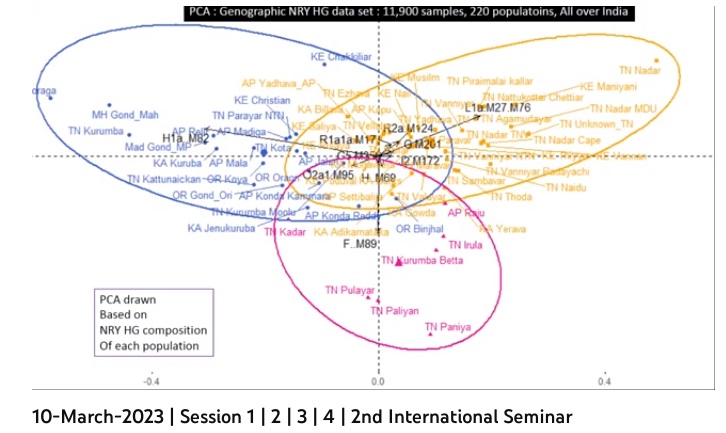
Africa or Europe?: Stringer, Chris, and Lucile Crété conclude carefully[5], “Recent progress in the recovery of environmental DNA from cave sediments promises to revolutionize our understanding of population relationships on the ground as H. sapiens and H. neanderthalensis groups interacted with each other. Few European sites in the time period between 40–60 ka contain human fossils, but many more of them could contain traces of human presence in the form of mitochondrial and nuclear genomic material. Research so far demonstrates that sediment DNA can identify humans at the species and individual levels, and this could potentially map the co-existence of different populations, their sex, their kinship relations, and the extent of intermixture between the different populations (Vernot et al. 2021; Zavala et al. 2021). Such breakthroughs could not have been anticipated even a few years ago, and no doubt there will be many more surprises to come. There is still much to learn about the ancient encounters that we have discussed in this paper, which left an indelible genetic mark on humanity today, and which makes their study so intriguing”.
10-03-2023 – Friday – Continuance of paper reading session: Last session was chaired by Ravi Korisettar and Exavation officers of the state archaeological department presented papers.
- Ramesh – Keeladi
- J. Baskar – Excavation at the settlement site of Adichanallur (2019-20 and 2020-21)
- Prabhakaran – Sivagalai
- J. Ranjith – Kodumanal excavation -2019-21
- Rangadurai – Korkai excavation
And the details of their papers have been available in the public domain and internet, as such information has been well publicized by the TN Government.
© K. V. Ramakrishna Rao
12-03-2023.

[1] Indian Express, Tamil Nadu Day: CM MK Stalin recalls DMK’s role in naming State, Published: 19th July 2022 03:19 AM | Last Updated: 19th July 2022 03:19 AM.
[2] The dailies and media translated his speech as, “At that time, some people would tease us saying, “The first monkey born in the world was the Tamil monkey”. We are not worried about that. Whatever we say, we say it scientifically. Isn’t it a shame? The day that shame was wiped away, this 18th of July!”.
[3] Harvati, Katerina, et al. “Apidima Cave fossils provide earliest evidence of Homo sapiens in Eurasia.” Nature 571.7766 (2019): 500-504.
[4] Harney, É., May, H., Shalem, D., Rohland, N., Mallick, S., Lazaridis, I., Sarig, R., Stewardson, K., Nordenfelt,
S., Patterson, N., Hershkovitz, I. and Reich, D. (2018). Ancient DNA from Chalcolithic Israel reveals the
role of population mixture in cultural transformation. Nature Communication 9(1): 3336, DOI:
10.1038/s41467-018-05649-9
[5] Stringer, Chris, and Lucile Crété. “Mapping Interactions of H. neanderthalensis and Homo sapiens from the Fossil and Genetic Records.” PaleoAnthropology 2022.2 (2022).
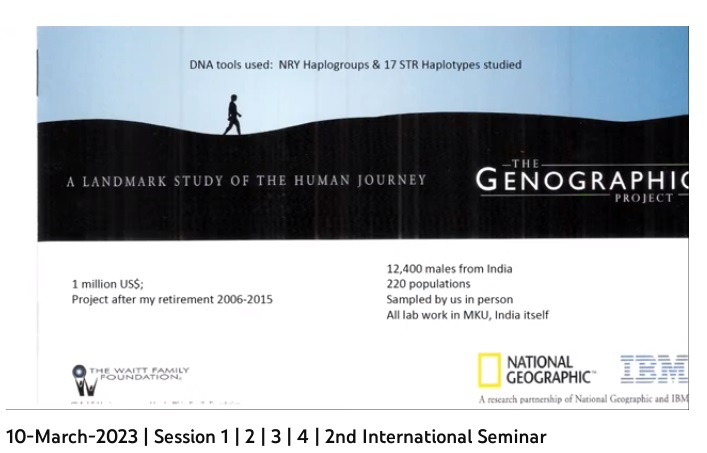
Filed under: A case for India, academic, academicia, anthropology, anti-brahman, anti-brahmin, anti-caste, anti-hindu, anti-india, anti-indian, anti-vedic, archaeological remains, archaeological sites, archaeological survey of India, archaeology, Ariyar, Art and Culture of Tamil Nadu, arya, Aryan, ascetic, ash, black, black granite, blade, blind-belief, blood, Dramila, Dravida, Dravidam, dravidar, Dravidi, Dravidian, dravidian monkey, Dravidian University, epigenetics, gene, ontology, phylogeny, proof, psychology, race, racialism, racism, ramayana, rao, rebuttal, reform, regionalism, relic, rescue, rescue archaeology, research, research paper, researcher, reservation, Rigveda, Sangam, Sangam literature, tamil, Tamil Brahmi, tamil chauvinism, Tamil inscription, Tamil manuscript, tamil monkey, tamil sectarianism, tamil separatism, tamili, tamilnadu, tamizhi, wood, wootz | Tagged: africa, ariyan, Ariyar, arya, aryan, aryan invasion, aryan race, black, blood, clour, Dramila, dravid, Dravida, Dravidam, dravidan, Dravidar, Dravidi, Dravidian, dravidian model, dravidian race, dravidian stock, Dravidians, epigenetics, gene, genetics, negro, ontology, out of africa, phylogeny, race, racialism, racism, skin, tamil, Tamil Brahmi, tamil chauvinism, Tamil language, tamil nadu, Tamil script, tamil separatism, Tamilnadu, white | 3 Comments »

